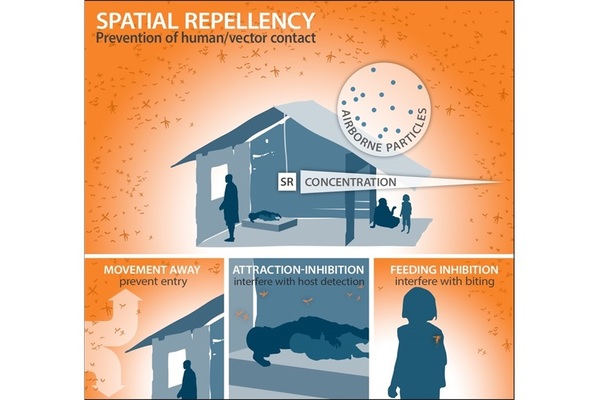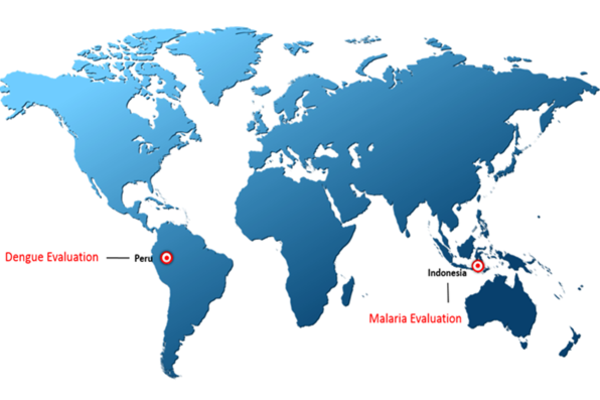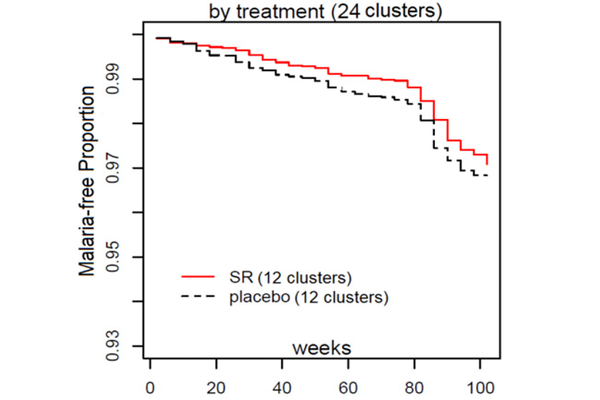


Spatial Repellents
The Prevention of Vector-Borne Diseases
The Spatial Repellents research program, sponsored by the Bill & Melinda Gates Foundation and lead by researchers, Nicole L. Achee and Neil F. Lobo, focuses on the prevention of vector-borne diseases, transmitted through the bites of infected mosquitos. Spatial repellents are designed to release volatile chemicals into the air to reduce mosquito-human contact.

Spatial repellents represent a new paradigm for vector control, causing insects to move away from the area, or inhibiting their attraction and/or feeding. This is different from traditional chemicals intended to kill mosquitos.

Evaluation of the ability of a spatial repellent to prevent infection was conducted in two locations—Iquitos, Peru for dengue and Sumba Island, Indonesia for malaria. Human blood samples and mosquitos were collected and analyzed.

Study data, including human infections and mosquito collections where subjects lived, is available by request.